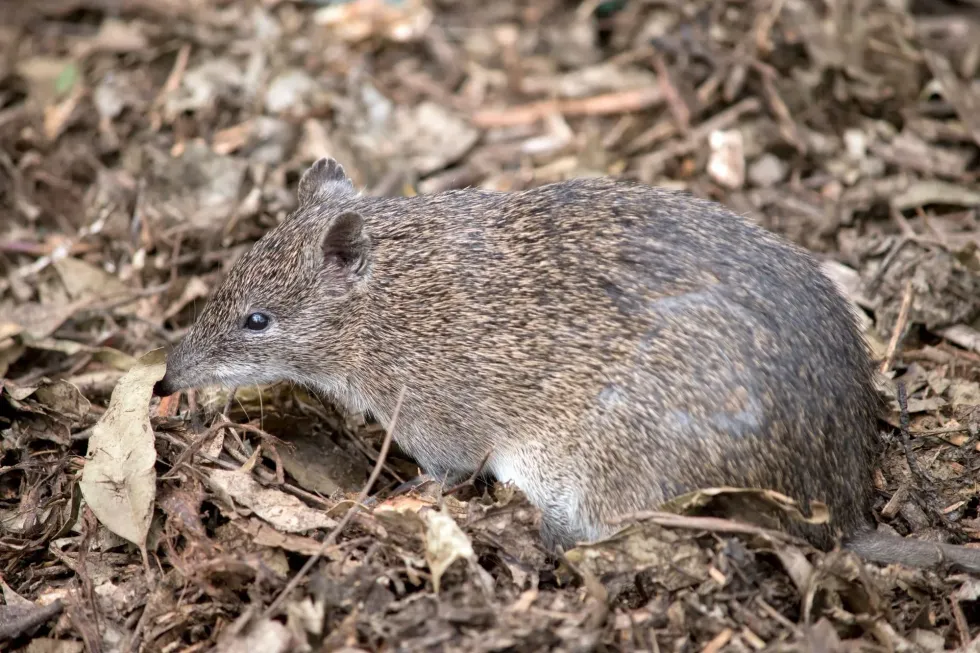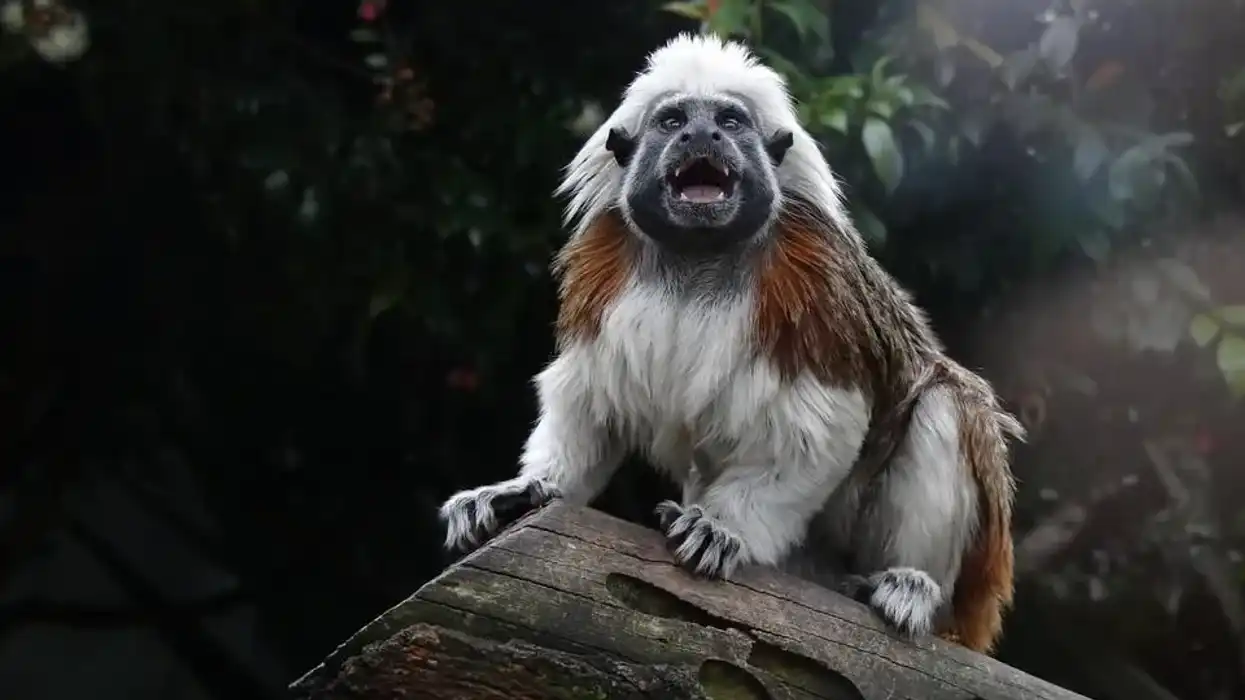The short-tailed bandicoot rat is a rodent species native to North Africa and Asia. It is part of the family Muridae in the order Rodentia.
There are many different names given to this species of rats such as the Indian bandicoot, bandicoot-rat, flat-tooth rat, short-tailed mole-rat, and short-tailed nesokia. This pest rat, according to the external, cranial, genetic, and dental morphology, is found to be closely related to the greater bandicoot rat (Bandicota indica).
These rats are mostly seen in river valleys and irrigation fields across their range of habitats. These mammals are found abundant in these areas, which is sometimes a headache for humans. These rats are known to damage cultivated crops and lands extensively.
The tunneling by the N. indica also damages irrigation walls. The identification of this species can be done by the brown coat on the body. The rodent also has a white patch on the throat in some cases.
The fur changes as it has dense, long, and soft hair in the colder winter months. In summer, however, the changes to short, sparse, and stubbly hair.
The tail and the feet are scantily haired, and the tail is short. N. indica is a nocturnal species and this rodent can be observed in burrows. These burrows have many tunnels and chambers.
The species should not be considered similar to the Bunn's short-tailed bandicoot rat (Nesokia bunnii). The Nesokia bunnii is found only in the marshes of southeastern Iraq and not seen in the same habitat as the N. indica.
For more relatable content, check out these gopher facts and nutria facts.
Short-Tailed Bandicoot Rat Interesting Facts
What type of animal is a short-tailed bandicoot rat?
The short-tailed bandicoot rat is a rodent of the family Muridae. People usually consider these rodents with bandicoots, but in reality, bandicoots are not rodents but marsupials.
What class of animal does a short-tailed bandicoot rat belong to?
Nesokia indica, short-tailed bandicoot rat, is the only member of the genus Nesokia of the family Muridae in the order Rodentia. These brown rats are part of the phylum Chordata in the kingdom of Animalia.
How many short-tailed bandicoot rats are there in the world?
The population of this species is not known. However, the Indian bandicoot has a very wide distribution and is presumed to have a large population. The species can also tolerate extensive habitat modification. It is unlikely that the population of short-tailed bandicoot rats will be declining anytime soon.
Where does a short-tailed bandicoot rat live?
The short-tailed bandicoot rat (Nesokia indica), discovered by Gray in 1830, is native to Asia and North Africa. The range extends from Xinjiang in China on the eastern side towards Egypt in the west.
The distribution is also found in Uzbekistan in the north, and in Bangladesh in the south. These rats are also seen in Sinkiang and northern India.
The N. bunnii, on the other hand, is seen only in the marshes of southeastern Iraq.
What is a short-tailed bandicoot rat's habitat?
The short-tailed bandicoot rat habitat includes moist areas along canals and streams. The habitat also consists of deserts, cultivated areas, and forests. The main areas of habitation are soft soil and good vegetation coverage. If the soil becomes too dry, these rats migrate to softer soil. They mostly are found in agricultural fields.
This rat spends most of its time in a burrow. The burrow may be up to 3.5 in (8.89 cm) long with depths up to 23.6 in (60 cm). A chamber in the burrow is lined with vegetation that helps the species nest.
Who do short-tailed bandicoot rats live with?
This is a nocturnal species and a single rat occupies one burrow. All burrows have chambers and tunnels.
How long does a short-tailed bandicoot rat live?
The life span of the rat with the scientific name Nesokia indica is not known.
How do they reproduce?
The reproduction method and breeding season of the Nesokia indica, short-tailed bandicoot rat, is not known. However, it has been found that these rats breed throughout the year in captivity. Temperature plays an important part in breeding and these rats only breed all round the year in places where the winters are warm.
The short-tailed bandicoot rat female gives birth to two to seven babies and there are three generations every year. The gestation period is around 17 days. The average litter size is however three to five in every generation.
What is their conservation status?
The conservation status of the short-tailed bandicoot rat is categorized as Least Concern by the IUCN Red List. The distribution of this species is large all over the world and due to the rat's ability to survive in any modified habitat, the population is unthreatened at the moment.
Short-Tailed Bandicoot Rat Fun Facts
What do short-tailed bandicoot rats look like?
Nesokia indica, short-tailed bandicoot rat, has a rounded short head. It is brown on the upper parts and the color gets lighter on the underside of the body. There can be a white patch on the throat of the species.
The winter coat has soft, dense, and long hair while the summer coat has short, stubbly, and sparse hair. A scantily-haired tail and broad feet are seen. The muzzle is short and broad, and the ears are also rounded.
The foot has five toes and the hand has four functional fingers. Strong, nearly straight claws are seen on the fingers. As the name suggests, the tail is considerably short.
* Please note that this is an image of a lesser bandicoot rat, one of the other species of bandicoot rats found in the world. If you have an image of a short-tailed bandicoot rat, please let us know at hello@kidadl.com.

How cute are they?
Rats are usually not considered cute. However, many enthusiasts keep rats as pets and they consider rats to be the hardiest animals available. In the native regions of Asia and North Africa, some people might consider these mammals as pests because they destroy agricultural farmland.
How do they communicate?
Rats communicate by tactile or chemical methods.
How big is a short-tailed bandicoot rat?
The length of the short-tailed bandicoot rat is 6.5-8.58 in (16.5-21.7 cm). The length of the greater bandicoot rat is around 10.6-11.4 in (27–29 cm), but this doesn't include the tail which is almost as long as the body.
Comparing these rodents with rice rats, rice rats have a range of length between 9-12 in (22.8-30.4 cm). The weight of this species is around 0.09-0.19 lb (40.8-86 g).
How fast can a short-tailed bandicoot rat move?
The speed is not known.
How much does a short-tailed bandicoot rat weigh?
The weight of this species is between 0.4-0.85 lb (181.4-385.5 g). The kangaroo rat found in areas of North America has a weight of 0.083-0.28 lb (37.6-127 g).
What are the male and female names of the species?
The short-tailed bandicoot rat male and female are not given different names.
What would you call a baby short-tailed bandicoot rat?
A short-tailed bandicoot rat baby is called a pup.
What do they eat?
The short-tailed bandicoot rat diet consists of leaves and roots of grass in fields. The diet also includes crops and fruit of barley, potato, groundnut, wheat, sugar cane, brinjal, mustard, and watermelon.
The predators of the short-tailed bandicoot rat (Nesokia indica) may include weasels, jackals, foxes, polecats, jungle cats, snakes, and domestic cats and dogs.
Are they dangerous?
They are not considered dangerous. However, they are known to damage vegetable, fruit, and grain crops and also their burrows damage the irrigation walls of fields.
Would they make a good pet?
They are usually not considered pets. In Asia and North Africa, these bandicoot rats are considered pests because they destroy crops and farmland.
Did you know...
Bandicoots are actually marsupials and not rodents.
The short-tailed bandicoot rat is not that big in size. There are other rodent species that are bigger such as rice rats.
How do you control a short-tailed bandicoot rat?
These rats avoid well-lit areas, so lighting fields and lawns can help deter these creatures. Also, the smell of ammonia can push these animals away. If all these methods fail, there's always an option to fence the area.
What adaptations do short-tailed bandicoot rats have?
They are nocturnal, keeping them cool most of the time. They have strong claws which they use to help dig burrows.
Here at Kidadl, we have carefully created lots of interesting family-friendly animal facts for everyone to discover! For more relatable content, check out these gerbil facts and black rat facts for kids pages.
You can even occupy yourself at home by coloring in one of our free printable mammals coloring pages.










